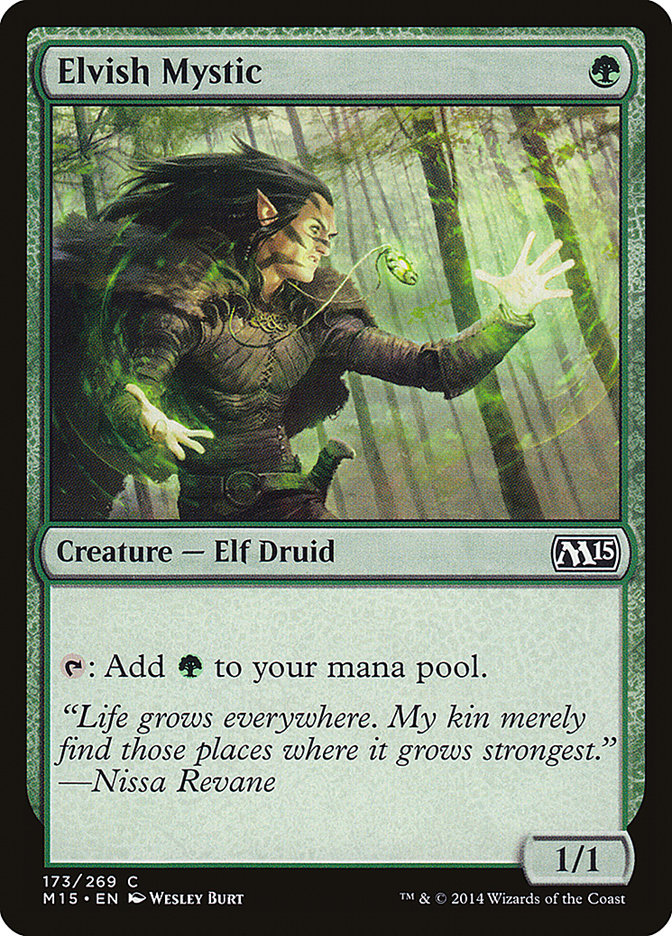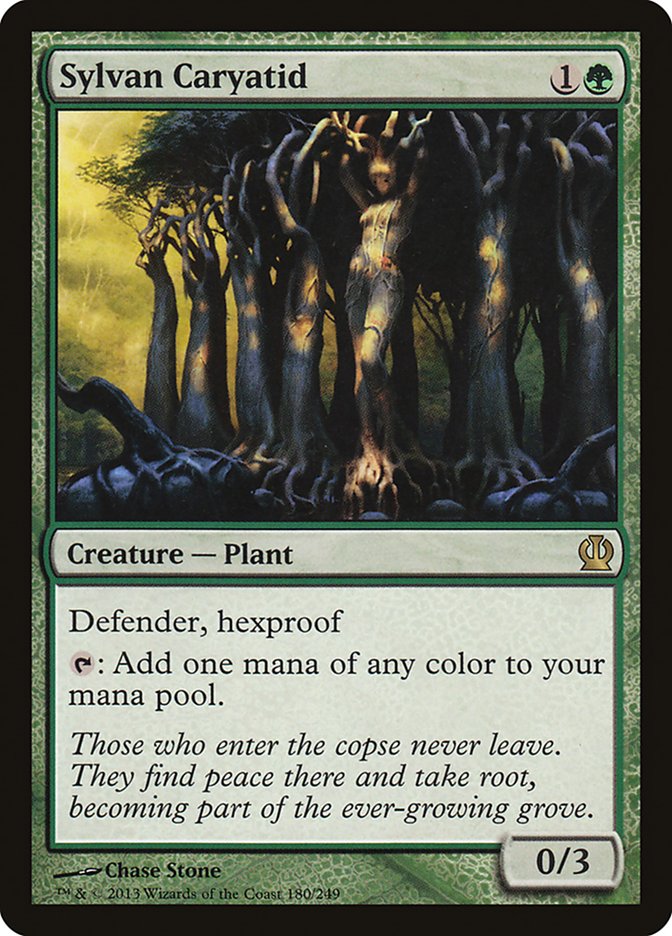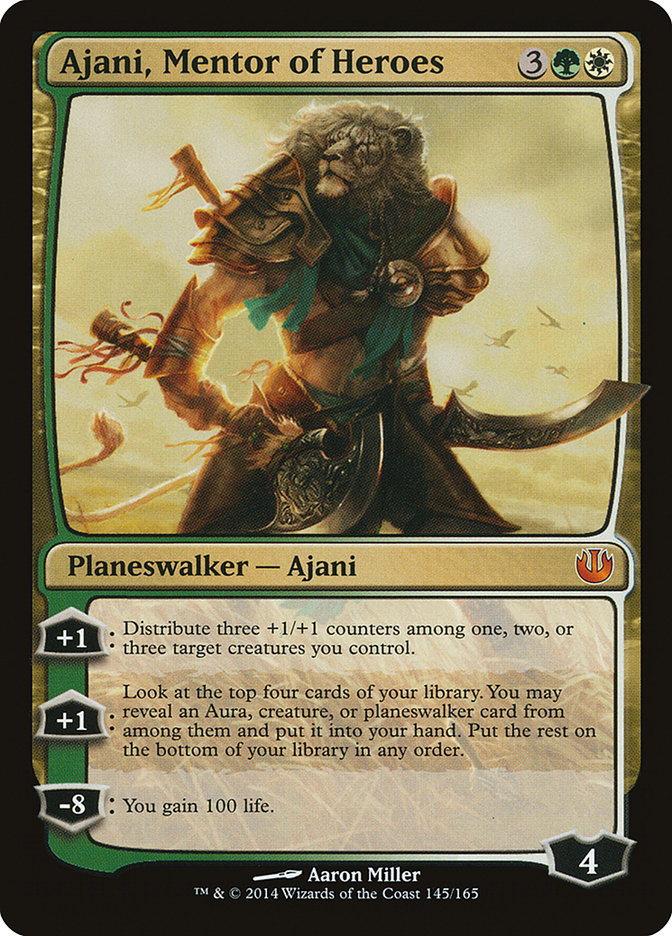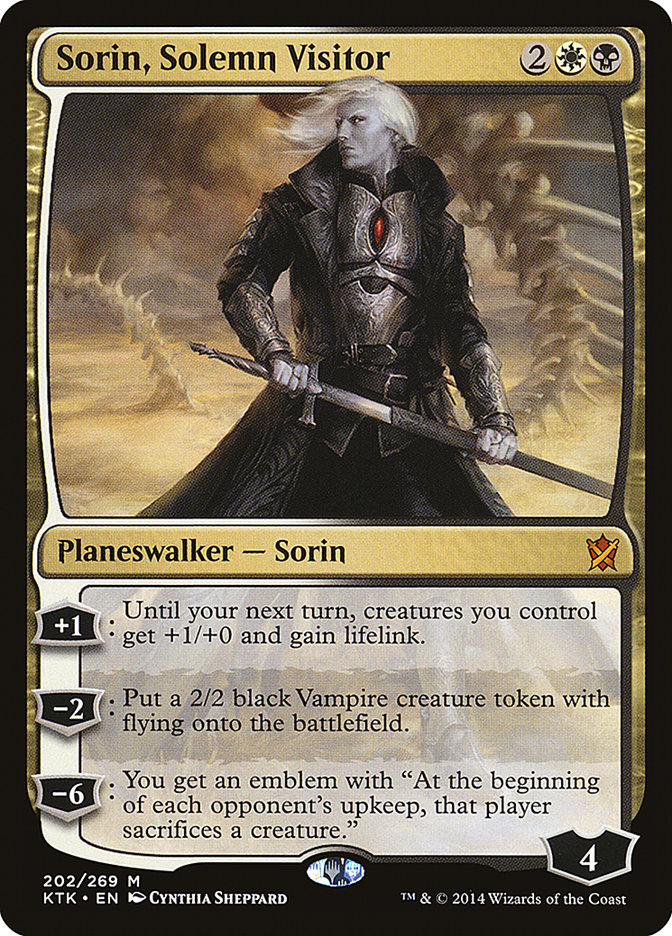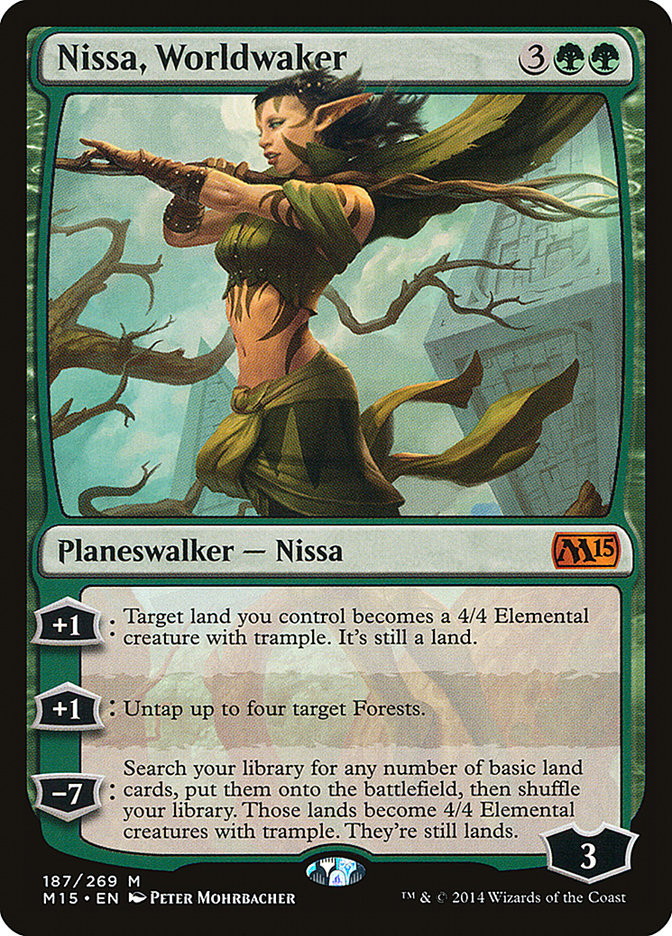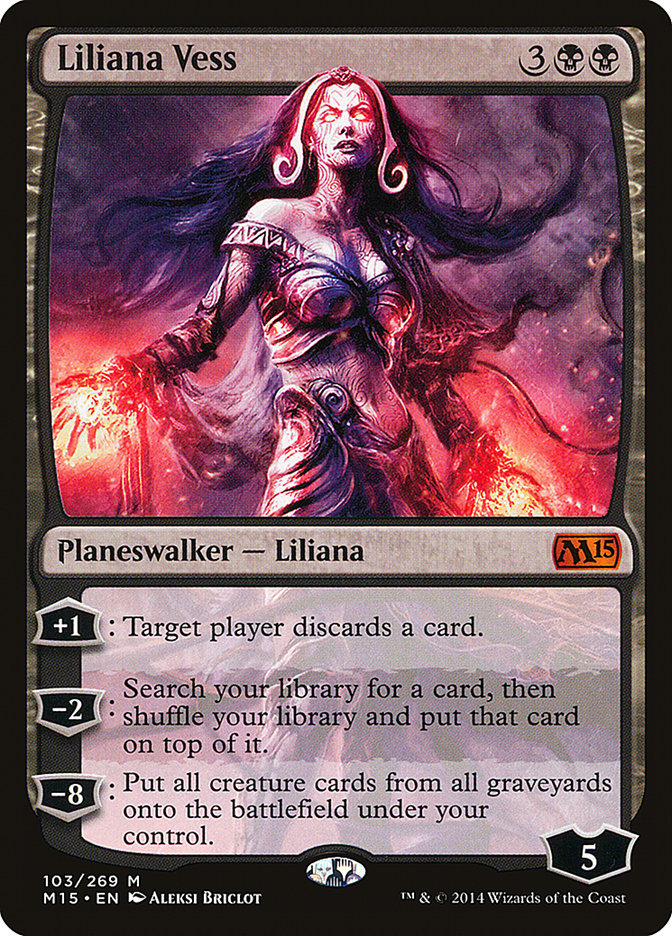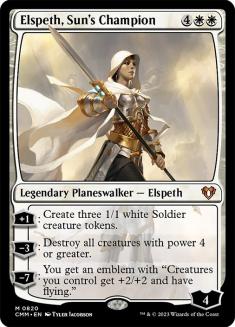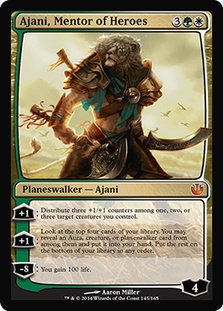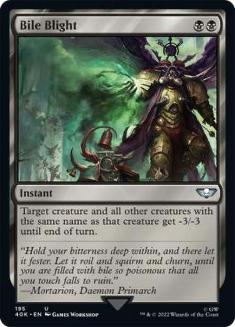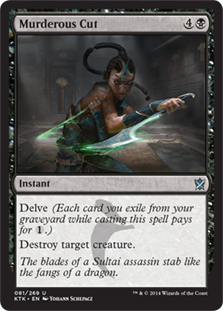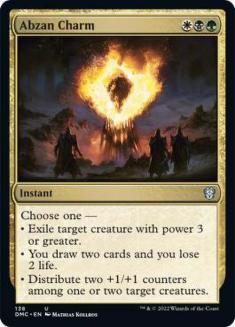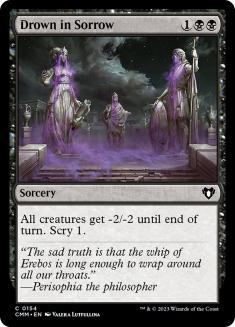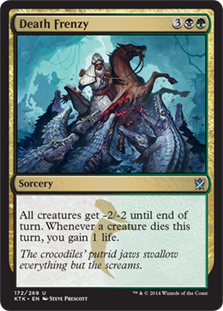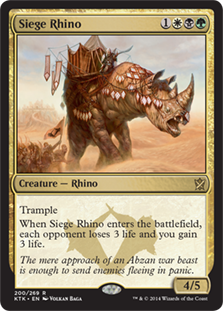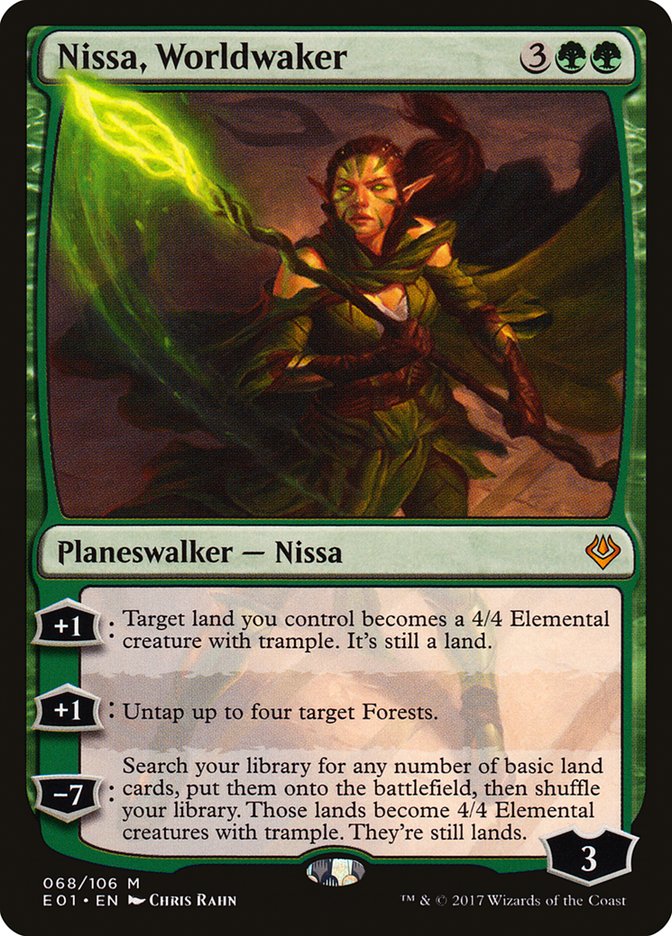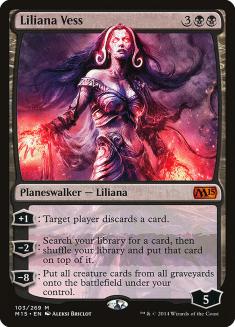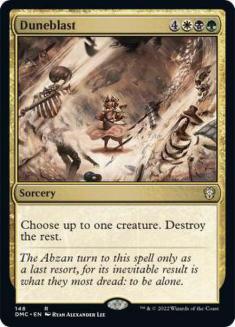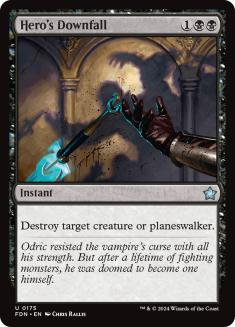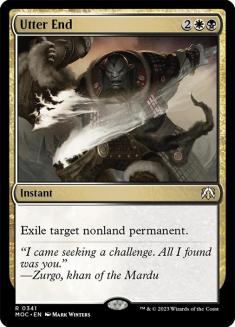I have played an absurd amount of Magic in the last week, and I still can’t get enough. Regardless of how many bugs I encounter with Magic Online, I still
want to jam the stock decks and my brews against whatever the masses are bringing to the table. Even now, I’m waiting patiently for my next round of an
8-man Standard event. And for what?
“People keep asking me if I’m back–yeah, I’m thinking I’m back.”
For the next eight weekends in a row, I have a Magic tournament to play. I’ll be flying, driving, and possibly even carriaging all over this beautiful
country looking for opponents to defeat and trophies to win. There are so many formats, so many powerful new cards, and I can honestly say that I don’t
think I’ll need a break. We’ll see once we reach week five or so, but I’m gearing up for one of the biggest runs of my life, all in an attempt to keep
myself on the Pro Tour train, as well as qualifying for the StarCityGames.com Players’ Championship.
It won’t be easy, and it won’t exactly be fun at some points, but I’m hoping that the end result will be worth the trouble. These are the good times. These
are the moments where we go in head first and come jumping out of the pool so we can jump right back in. I’m on the high dive looking into the deep end,
seeing my wavy reflection stare back at me.
I’m ready.
But since this past week is just the beginning of a long stint of tournaments, I thought I’d get started by Top 8’ing a Magic Online PTQ and a Super IQ to
get things started. The deck of choice for the last week has been Abzan Midrange ala Ari Lax, but with a few changes after playing with the deck a bit. I
haven’t quite found the configuration that I love, but all the cards in the deck are doing something proactive and powerful.
Like most ramp-style decks, there isn’t a lot of synergy. There are mana accelerants, removal spells, and big dumb idiots, but at least I get to play with
new cards! I’m sure that I’ll be sick of the Abzan Midrange deck in just a few weeks, as it isn’t really my style, but right now I’m winning, and that
makes it fun enough. Siege Rhino is a powerful card and really is the only thing keeping me glued to the archetype.
Without further ado, here’s the list I’ve been playing non-stop for a week.
Creatures (16)
Planeswalkers (8)
Lands (25)
Spells (11)
Sideboard

In both of the major tournaments where I’ve played this deck, my list was always a few cards different. That is not uncommon for me, as I learn new things
about the deck I’m playing, or deck other people are playing, which leads to me making minor adjustments. I also like to compensate for the inherent
red-ness of the Magic Online metagame, which is why I’ve chosen to play four copies of Drown in Sorrow as well as a little cherry on top.
I’m not going to get into the specifics of Death Frenzy, because the card is pretty narrow and is virtually just a fifth copy of Drown in Sorrow, but
suffice it to say that it functions quite well against both Mono-Red and R/W Aggro decks. The look on your opponent’s face when you cast Death Frenzy right
after their Hordeling Outburst is just…priceless.
The maindeck is a bit different from Ari Lax’s original list used to win Pro Tour Khans of Tarkir. After playing with his deck for about twenty or so
matches on Magic Online, I came to some conclusions on my own. I don’t want to sit here and tell you how wrong the Pro Tour Champion’s decklist was because
things change, and my preferences also affect how I build decks. So let’s start at the beginning and work our way up from there.
The Manabase
After playing with the deck a bit, I noticed that I rarely flooded out. I also noticed that many of the games I lost were due to me missing my third or
fourth land drop, lacking a significant play on a crucial turn of the game. As a general rule, I tend to add an additional land to any control or midrange
deck from the “stock” lists, but I think this rule has grown more important in Standard over the last few years. The cards themselves are outrageously
powerful. Sometimes oppressively so. That means that, as long as you’re casting your spells, you’re generally winning the game. Missing land drops is
always a bad time in a midrange or control deck, because those turns allow your opponent to turn the corner and run wild on you.
This deck is no different. Not hitting the land to cast Siege Rhino or Elspeth on the turns you need them is (to quote Zac Hill) “devastating.” It can be
even more frustrating to have Courser of Kruphix sitting in play while you stare at another non-land on the top of your deck. With that said, I don’t mind
flooding out with this deck, to an extent. You have so much to do with your mana every turn, which makes it hard to lose even when you do start to flood
out.
This version of Abzan doesn’t play a lot of mana sinks, unlike the more aggressive version featuring Fleecemane Lion and Rakshasa Deathdealer, so you
probably need to find the right balance between lands and spells. Ari was pretty close to hitting it perfectly, but I continually find myself wanting more
lands than I have access to.
As far as having the right number of lands coming into play untapped, as well as correct colored sources, I’ve rarely had problems with the above manabase.
I’ve added a Temple of Silence, both to compensate for adding an extra land by giving it value ala scry, as well as adding an additional white source for
cards like Wingmate Roc and Elspeth, which I’ve had a little trouble casting at times.
I also wanted a bit more mana acceleration. The original list was glacially slow, and I found my best draws often came when I drew Elvish Mystic to go
along with my first two lands coming into play tapped. After that, it was a quick change to the deck to make room for two more mana dorks, which have
helped significantly against all archetypes. In this format, you can’t afford to stumble, and you can’t afford to be slow. More copies of Elvish Mystic
helps alleviate this concern.
There are times where I find myself wanting to cut the Mana Confluence, but then I immediately play a game where I draw it and it saves the day. The deck
has some…interesting…mana constraints, and Mana Confluence will help those at crucial points. You gain a respectable amount of life with Courser of
Kruphix, Siege Rhino, and Sorin, Solemn Visitor, so hopefully the damage won’t come back to bite you too much. Most of the time, I find Mana Confluence to
be similar to Llanowar Wastes, which might mean it is just better than Llanowar Wastes. But I am not brave enough to change the manabase that much, nor do
I ever want to draw a second copy of Mana Confluence.
In any deck.
Ever.
The Removal
The removal spells in the deck seemed solid at first, but the more I played with Utter End the more I hated it. Eventually I decided that it was important
to have access to one copy as another virtual proxy of Hero’s Downfall that could kill enchantments. Whip of Erebos and Banishing Light see a reasonable
amount of play, and even exiling Keranos is pretty sweet. But it is clunky at times and rather expensive for a removal spell. At this point, one copy just feels correct to me, and that’s as good as it’s going to get.
I’ve seen a lot of people arguing between playing four copies of Hero’s Downfall and Abzan Charm. Ari’s list played four copies of Charm and only three
Downfall, which seems strange in a format full of planeswalkers, right? Well, I’m here to end that argument right here and now. Abzan Charm is just absurd
on every metric. All three modes are used regularly, and I’m never unhappy to draw multiples. It isn’t even bad against Mono-Red, as they’ll aggressively
use Titan’s Strength on their Akroan Crusader just to make another soldier token.
Hero’s Downfall is a great card, but unlike Abzan Charm, I don’t usually want to draw multiple copies. It is also a little harder to cast than Abzan Charm,
mostly due to the fact that you want to make sure you have access to all three of your colors at most points in the game. Windswept Heath is also an
important land to play early that can’t produce black mana, making some of your Elvish Mystic draws physically unable to play it.
The Creatures
It is probably no surprise to anyone that the most important cards in this deck, the backbone, are the early creatures.
Without access to acceleration or a way to consistently hit your land drops, this deck would be significantly worse. Ramp decks tend to be mediocre when
they don’t have access to the cards that speed them up, or alternatively, the ones that slow the opponent down. The tricky part about this deck and its
Elvish Mystics is that you will rarely want to cast Elvish Mystic on turn 1. Most of the time, it is preferable to lead on a tapped land, so that a tapped
land on the second turn along with an Elvish Mystic will curve naturally into a Siege Rhino or Sorin, Solemn Visitor.
I’ve been heavy-winded in the last few months concerning this trio of creatures. They are the heart of most green decks in the new Standard format. They
give you a level of consistency and speed that allows you to overwhelm most other decks. Without these cards, your deck would be significantly different,
and the support cards in your deck would play vastly different roles. If you compared this archetype to the more aggressive version, you will see that the
two decks rarely play games out in the same way. Where they want to naturally curve with creatures and removal spells, we’re trying to go way over the top
of them with things like Elspeth. This would not be possible without all three of the above creatures.
This is the guy that ties it all together. Siege Rhino makes it possible to play Thoughtseize in a three color deck. You could care less about the damage
you take in the early game from small attacks or your manabase. Those life points are quickly made up by Dr. Rhinoceros Siegeman. And as we all know by
now, the good doctor never works alone.
Against Jeskai, Mono-Red, and most control decks, Siege Rhino will apply ample pressure while stabilizing your life total. Even if they’re able to get it
off the battlefield, it has already put you a little farther ahead. Every little bit of damage counts against control, and every little bit of lifegain
puts you further and further away from dying to Stoke the Flames.
The most hilarious part about Siege Rhino is that people still haven’t figured out a good answer to it out of the Jeskai or Red decks. When you play Rhino
on Turn 3, on the play, there isn’t much they can do about it. You’re going to drain them for a bit, and probably attack them a few times while you use the
rest of your turns killing their creatures or deploying more threats. Alongside Courser of Kruphix and Sorin, the amount of life you can gain from this
deck is astonishing.
The Planeswalkers
The maindeck features three powerful planeswalkers. Let’s break them down so you know exactly why they’re in the deck.
Ajani is not a card I ever thought was actually good. I think it took two different cards to end up making Ajani a standout threat in Standard: Siege Rhino
and Sorin, Solemn Visitor. Having access to a cheap, large creature with trample or a 2/2 flier that curves perfectly a turn before Ajani is gigantic. When
you start swinging for large chunks of evasive damage as early as turn 4, most opponents will just fold.
Ajani also holds water against the control decks, acting as a way to make your Elvish Mystics into real threats, or just digging for more threats to put on
the table. When your opponent is constantly sweeping your board with End Hostilities, Ajani is one of the better cards you can cast while they’re tapped
out. If they don’t have an immediate answer, you will usually bury them in card advantage.
This guy, he just comes in all willy-nilly, uninvited, and starts wrecking up the place. Why is he even on Tarkir? Well, the truth is that Sorin doesn’t
give a s*** about what you think, and he goes where he wants to go. And this incarnation of the vampiric planeswalker is just a dee-light with Siege Rhino.
Most aggressive decks can’t handle a drain for three, let alone constant draining for five a turn after that. Sorin is also a card that can dominate the
mirror, giving you a steady stream of threats, or potentially using his ultimate to keep their creatures in check for the rest of the game.
While Sorin isn’t always stellar when he comes into play, you can often set up the board so that he has a lasting impact. Against every archetype, he has a
lot of uses. Generally speaking, a planeswalker that requires some thought upon activation is generally very powerful. There is nothing more compelling in
a game of Magic than access to a multitude of options.
Elspeth is still good? Who would have thunk?
In the sideboard, we have access to two more planeswalkers:
These two planeswalkers are absolutely busted against control and pretty solid against other midrange strategies. In the Abzan Midrange mirrors, all you
want to do is play big threat after big threat, and keep yourself from getting two-for-one’d. These two ladies help keep the juice flowing, even if you’re
starting to get a little flooded.
The Sideboard
Our sideboard is built in such a way that we have the capability to take out all of our mediocre cards when they’re bad in any given match. Now, I’m not
usually one to give a cut-and-dry sideboarding guide, but I’m sure many of you are clamoring for it. So here goes:
VS Jeskai
Out:
In:
For the most part, your Jeskai opponents are going to be siding in some number of Disdainful Strokes and Dissolves to combat your expensive curve. You want
to make those counterspells very bad by stripping their hand with Thoughtseize. You also want to lower your curve significantly, as the easiest way to lose
is by not being able to cast all of your spells.
Siege Rhino will do most of the heavy lifting, so make sure he resolves by hitting their hand. Their best threat against you is Mantis Rider, which is why
we’re bringing in the Bile Blights.
VS Mardu
This matchup is a bit tricky when it comes to sideboarding. Some lists play Hordeling Outburst, while others play a bigger top end with Elspeth. If they’re
more aggressive, you want to lean on Bile Blight and Drown in Sorrow, cutting your Thoughtseizes and Elvish Mystics. If they’re slower, you want to keep
most of your maindeck the same. I could see potentially bringing in Nissa and Liliana, as well as the Thoughtseize, but I’m honestly not sure what to take
out. I usually just play it by ear, as the contents of their deck determine exactly what you want to be doing.
VS Mono-Red Aggro
This matchup is why we have four copies of Drown in Sorrow. Without that card, many of their draws are too fast for you to keep up, regardless of how many
Siege Rhinos you draw.
Out:
In:
Abzan Charm isn’t the greatest here, but it is certainly better than the clunky planeswalkers or the Thoughtseizes. A well-timed Abzan Charm against their
Titan’s Strength or Dragon Mantle is pretty saucy, and I’ve even opted to put counters on a defensive Sylvan Caryatid. While Thoughtseize isn’t always bad
against red decks, it is particularly embarrassing against an opposing Eidolon of the Great Revel, which most of them have in their sideboard. They can
also empty their hand quickly, and the last thing you want to do is waste time and life by taking away something like a Dragon Mantle.
Tom Ross built this new incarnation of Red to be quite resilient to Thoughtseize. Nearly every card in the deck is a one-mana creature or a one-mana
enabler, taking away most of the power of Thoughtseize: making a decision.
VS Abzan Midrange
This matchup revolves around having something important to do every single turn. But what I’ve found out is that the games go long enough that having
access to Thoughtseize isn’t actually all that important, so long as you have your deck configured to fight against everything. In the games that go long,
Thoughtseize will be a mostly dead draw, where having any other spell, even an Elvish Mystic, can win you the game. It may go against the grain, but here’s
how I sideboard in the mirror:
Out:
In:
Murderous Cut is actually pretty bad in the mirror, as the only real target is Siege Rhino, and I feel like we have that thing under control. In fact, I
don’t think Siege Rhino is actually even good in the mirror, which is why I like to trim on them a little. You still want to keep your threat density high,
and you also want to overload your opponent’s removal spells, so keeping a few isn’t so bad.
I feel like I’ll get a lot of flak for this matchup, but I’ve had great success in the mirrors thus far. I’m going to continue experimenting with the deck
to see if there is a better configuration.
VS Abzan Aggro
This matchup is significantly different than the mirror, as you need to overload on removal to deal with Fleecemane Lion and Rakshasa Deathdealer. This
matchup can be pretty tough, as you’re doing a lot of the same things, but they can get out ahead of you pretty quickly, and their Fleecemane Lions will
occasionally get out of control with Herald of Torment.
Out:
In:
If the game goes long, you should be advantaged. Your removal is pretty strong against them, but you need to know what types of hands you can keep and what
types you can’t. For the most part, any hand with three lands and two removal spells is a keeper. However, having nothing else to go with that is a bummer
and might result in you flooding out and dying before you draw anything relevant.
VS U/B Control
This matchup feels like a joke to me. They don’t have a real sweeper, and you have so many ways to overload their removal. Here is how I sideboard.
Out:
In:
Your removal is pretty bad against them, as most of these style of decks try to kill with Prognostic Sphinx or Pearl Lake Ancient. Either way, your removal
is mediocre and you should try to be as aggressive as possible. Note that the creature-lands made from Nissa won’t die to Perilous Vault.
Happy Hunting
Well, that’s basically all I’ve got for the deck right now. I’ve been playing it for four hours or more a day for the last week, and I have only lost a
handful of matches with it. I’ve tried a few different variations on the above list, including cutting to zero copies of Thoughtseize in the maindeck, but
Thoughtseize is just too important to have as a catch-all in the first game. When you can make your deck a lot more threat-dense, Thoughtseize isn’t as
necessary, which is why I like cutting them against other midrange strategies. Your goal: trying your best to ramp and play gigantic threats before your
opponent.
I’m not sure that this deck is the best deck in Standard. But what I do know is that it is the best deck for me to play right now. It has the consistency,
power, and speed necessary to fight all of the other major contenders in Standard. As the format evolves and people figure out new and exciting things to
do, this deck will inevitably change to fight it. That is the nature of midrange: always adapting to the strategies around you.
I’ll be heading to the Open Series in Minneapolis this weekend, trying my best to grind out points for the Players’ Championship. If you’re going to be
there, feel free to ask me questions about the deck if you end up playing it. I’m not shy and I don’t mind helping people who are brave enough to ask for
it. But for now, take what I’ve said and try it for yourself. My word is not lore, but hopefully it is a great starting point for anyone looking to pick up
the deck.


